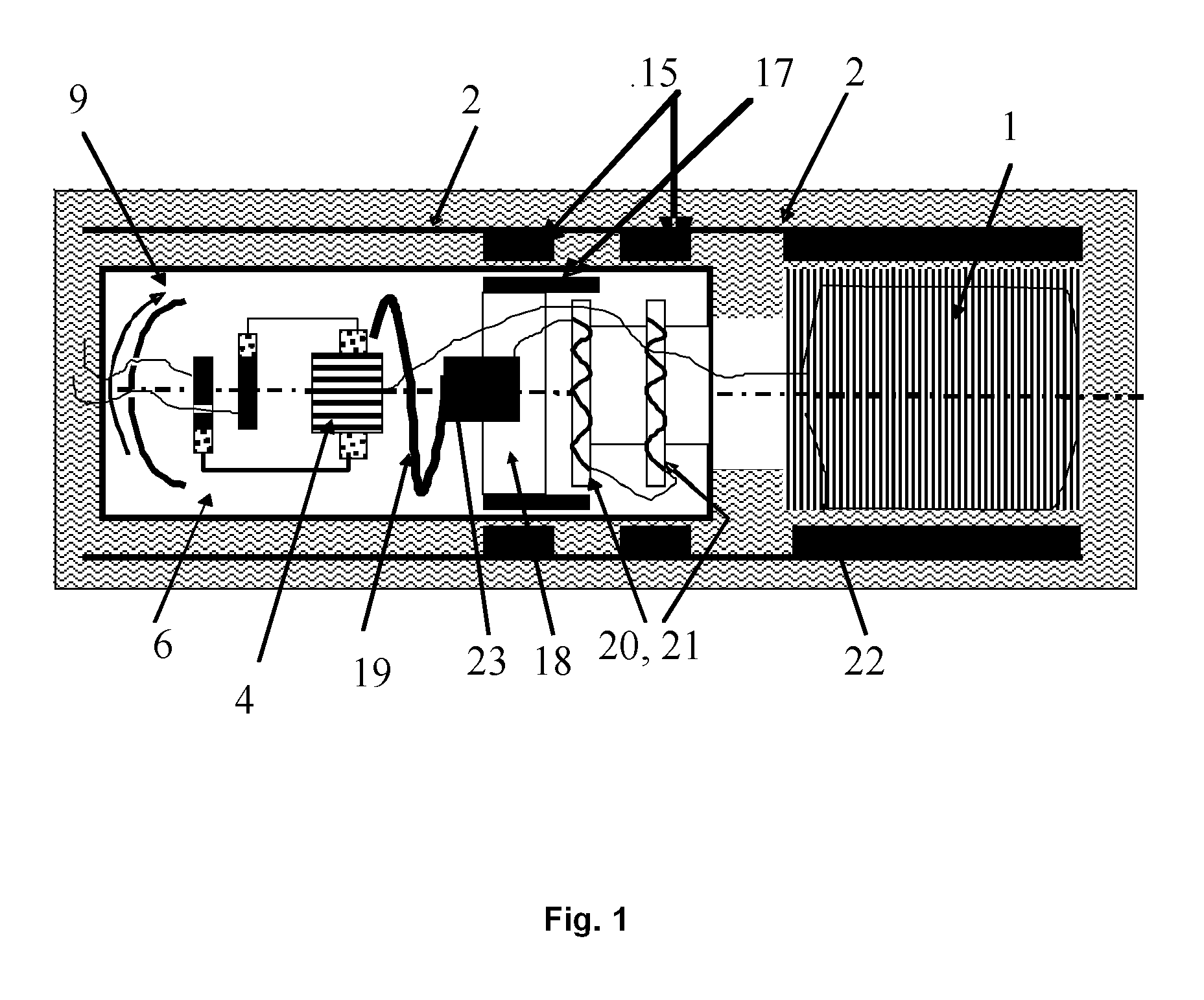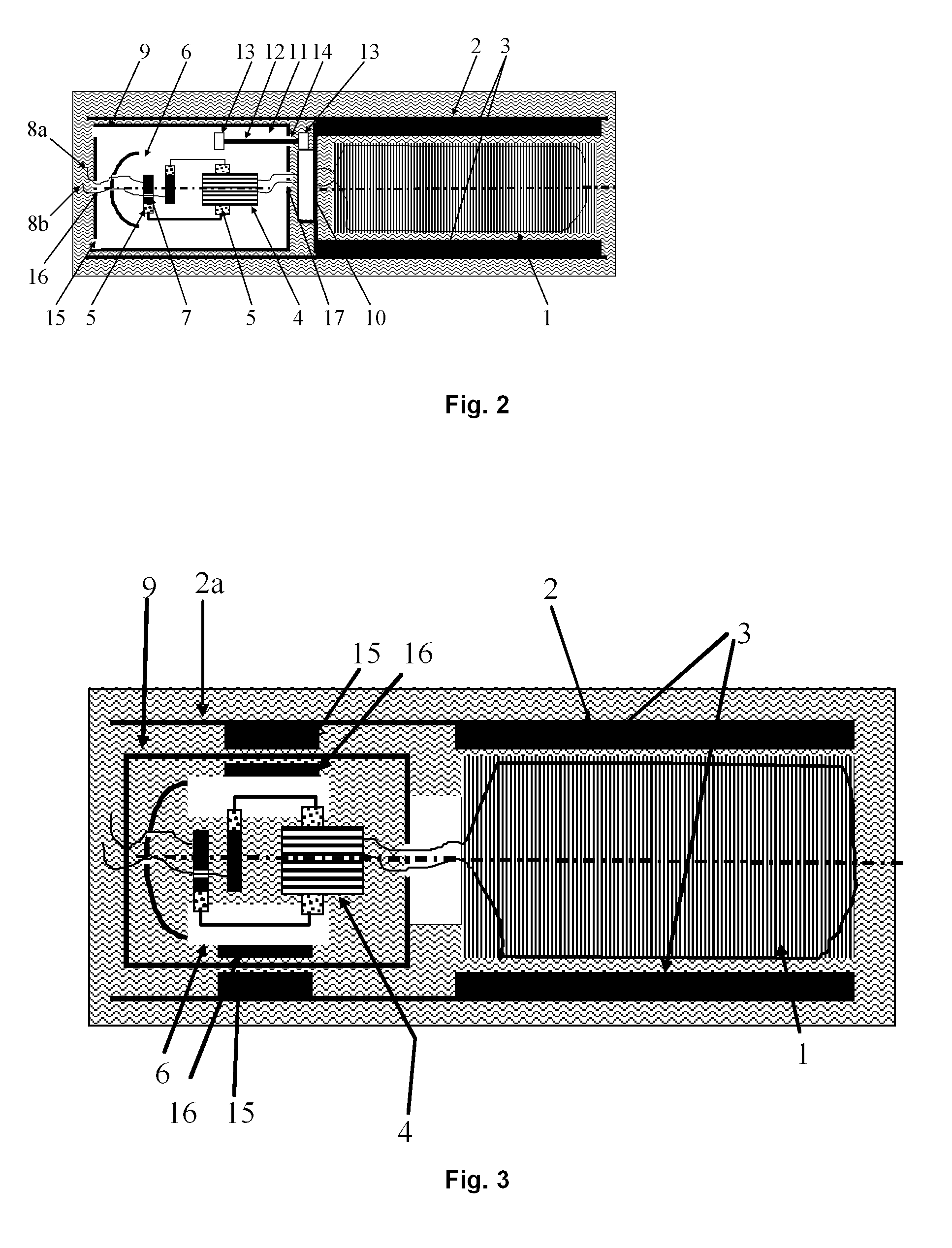Submersible direct-current electric motor
a direct-current electric motor and submerged technology, applied in the direction of machines/engines, flexible member pumps, positive-displacement liquid engines, etc., can solve the problems of limited rotation speed control range, considerable reactive power consumption under low-load conditions, and complicated speed control system
- Summary
- Abstract
- Description
- Claims
- Application Information
AI Technical Summary
Benefits of technology
Problems solved by technology
Method used
Image
Examples
Embodiment Construction
[0025] The submersible direct-current electric motor corresponding to the invention includes an armature winding (1) which is fixed and forms the central part of the motor. The armature winding (1) is enclosed in the motor housing (2) which is capable of rotating around the armature winding (1). The housing (2) carries permanent magnets (3) which form an excitation flux. Alternatively, it is possible to use excitation windings instead of permanent magnets. Further, the fixed armature winding (1) is connected through wires to a collector (4) which is also fixed. Brushes (5) installed on a rotating ring (6) interact with the collector (4). The brushes (5) also interact with corresponding solid fixed collector rings (7) which are connected to respective polarity wires (8a, 8b) of the power cable. Each brush (5) can be made of two separate brushes connected to each other. One of these brushes interacts with the collector (4) and the other one interacts with the corresponding collector r...
PUM
 Login to View More
Login to View More Abstract
Description
Claims
Application Information
 Login to View More
Login to View More - R&D
- Intellectual Property
- Life Sciences
- Materials
- Tech Scout
- Unparalleled Data Quality
- Higher Quality Content
- 60% Fewer Hallucinations
Browse by: Latest US Patents, China's latest patents, Technical Efficacy Thesaurus, Application Domain, Technology Topic, Popular Technical Reports.
© 2025 PatSnap. All rights reserved.Legal|Privacy policy|Modern Slavery Act Transparency Statement|Sitemap|About US| Contact US: help@patsnap.com



